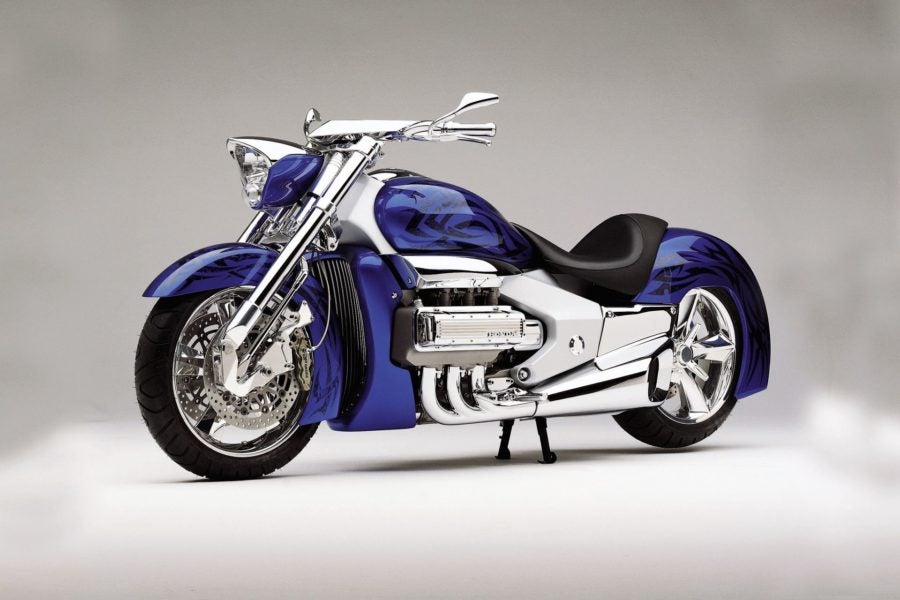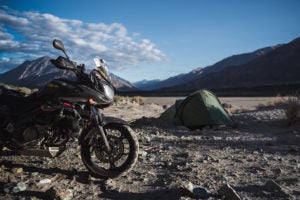Naming of products is hard. I won’t go into the many examples of amusing mistakes, and there have been many names which are both clever and culturally appropriate. Take ‘Mazda’, the car company. The name was inspired by Ahura Mazda, the god of light, harmony, intelligence and wisdom from an early Persian religion. A good name for any company, really. But it also met the Japanese requirement of reflecting the name of the company founder: his family name ‘Matsuda’ is pronounced much like ‘Mazda’.
Other Japanese naming decisions are not quite so clear. Take ‘Valkyrie’. I’m sure that Honda’s naming committee had Odin’s and Freya’s handmaidens in mind, out in their classic brass breastplates riding their chunky wild horses. Good image. But did anyone think beyond Valkyrie tasks like serving up mead, to their main job as harriers of the battlefield and ‘choosers of the slain’?
I suspect that many of the people who bought Valkyries had the busty riders in mind when they thought of the name, and not their grisly task.

Honda’s T1 concept bike, the first creation on the way to the Rune. Slick, but not convincing.
In an almost equally serious way, the name of Valkyrie derivative ‘Rune’ means more than just a letter in a runic Norse alphabet. It also means ‘secret’, ‘hidden’. One of the few things that Rune watchers agree on is that Honda did not promote the bike sufficiently. Did they think the outrageous appearance would sell the bike all by itself? Or did someone at Honda get cold feet?
Here is an opinion from The Bike Shed Times, an Australian bike sales website. “It was one of the most extravagant production decisions in motorcycle history. Build 3,000-odd bikes at a reported manufacturing cost of $US100,000 each, sell them for just $25,000, and put the resultant $225 million loss down to marketing expenses.” But in that case, why not make more promotional use of the bike?
Like, for example, when Honda first introduced the ST1100, I convinced Australian management to give me a bike which I would then have painted by one of the ‘Brushmen of the Bush’, the painters in Outback Broken Hill. These people specialized in evocative landscapes and nature paintings, and I though that would suit the ST. The result was, to my eyes, outstanding. It featured a subtle weave of Outback grasses and flowers, almost like an ST1100-shaped window into a desert scene.

The other side of T2, well on the way to the final design.
The bike was intended to be a centerpiece of the Honda stand at the Sydney Motorcycle Show, but one of the execs lost his nerve and placed it at the back of the stand. He was told by his boss to move it to front and centre. Almost immediately, it was enthusiastically bought straight off the stand by a Japanese businessman.
Back to the Rune. Its origins go back to 1995 to the Zodia, a concept cruiser. Shown at the Tokyo show, it was a high-tech custom showcasing engineering concepts never seen in production, and “styling that blended elements of classic retro lines with new-age futuristic technology” according to Honda. It received a typical concept bike reception: interesting, but “they’ll never build it”.
Three years later, Honda revealed another concept machine, based on the Gold Wing’s horizontally opposed six cylinder engine. T1, as it was known, foreshadowed the VTX more than the Rune but would be followed by three more concept bikes in the T-series.
It was T2 which was actually most indicative to what would become the Rune. “T2 blends together a neo/retro persona;” said Honda at the time, “retro with respect to the deep fenders and low-slung tank that are evocative of lowered and chopped roadsters from the 1940s and ’50s. Yet the T2 is cutting-edge with its use of a six-cylinder engine and aluminum twin-spar frame plus Pro Arm rear suspension.”
The design T2 design proved to be a truly exceptional accomplishment according to Honda’s boffins. There was a strong positive reaction from within Honda, which was repeated when T2 was shown to the public. “With T2 virtually everyone loved all of the individual components as well as the overall concept itself,” said Honda Senior Designer Tony Schroeder.

T3 shows off its (essentially irrelevant) drag racing tire.
Large Project Leader (LPL) on the Rune, Masanori Aoki, remembers T2’s first outing at the Cycle World show in Long Beach. “The T2 was nearly four times more popular than any of the other designs,” he said, “far and away the overwhelming favorite. I remember how one person even said, ‘I will bring $30,000 in cash, so please sell it to me right away.’”
The other two concepts, oddly, were aimed at quite different buyers. T3 was inspired by the drag strip with more of the look of a performance machine, while T4 was right out in left field, “unique in its intent as a technical material study-an internal showpiece that is a rolling exercise in construction techniques,” according to Honda’s timeline for the Rune project. Even more strangely, it was not an internal project. T4 was formed by the hand of master fabricator Mike McCluskey, who usually spends his time restoring Ford Cobras and vintage aircraft.
Essentially, then, it was the internal and external enthusiasm that saw T2 used as the basis for the Rune. Why was the bike a sales failure, then? Depending on whom you ask, between 800 and 3000 Runes were built, each sold at a huge loss – some sources put it at US$75,000 per bike That would account for some of the lack of enthusiasm from American Honda once they had their bike.

Who’s your daddy? The engineering department in this case.
I suspect the problem was at least partly that the bike’s styling didn’t offer any references to past bikes, which might have made it easier to accept. BMW had the same problem with their foray into the cruiser market, the R 1200 C (the less said about the 850 C the better). It may be a cliché today, but do not forget Machiavelli’s comment that “there is nothing more difficult to carry out, nor more doubtful of success, nor more dangerous to handle, than to initiate a new order of things.”
Motorcycle manufacturers have learned this lesson. Hello, BMW R 18. Whether it is Triumph, Kawasaki, Ducati or Honda, many new models reference the company’s history. But what about the enthusiastic reception of the Rune prototypes by the crowds?

The final result. I rode one and enjoyed the power and handling, although I thought it was top heavy.
Let’s go with Machiavelli once more when he says: “the temper of the multitude is fickle, and… while it is easy to persuade them of a thing, it is hard to fix them in that persuasion.” Or to buy a Rune.







